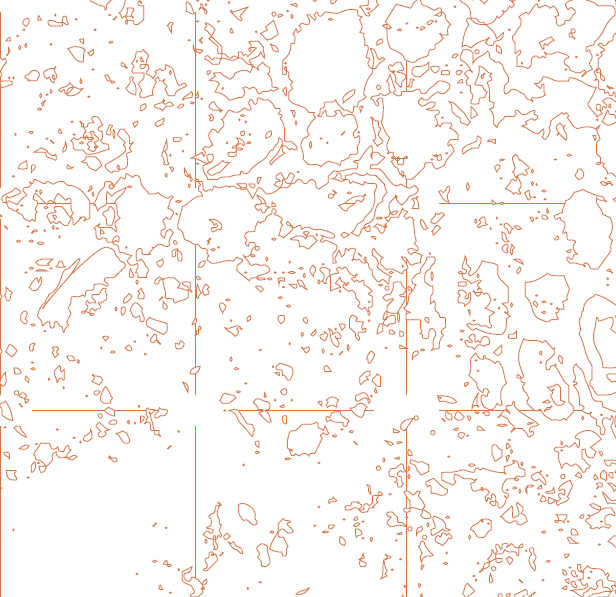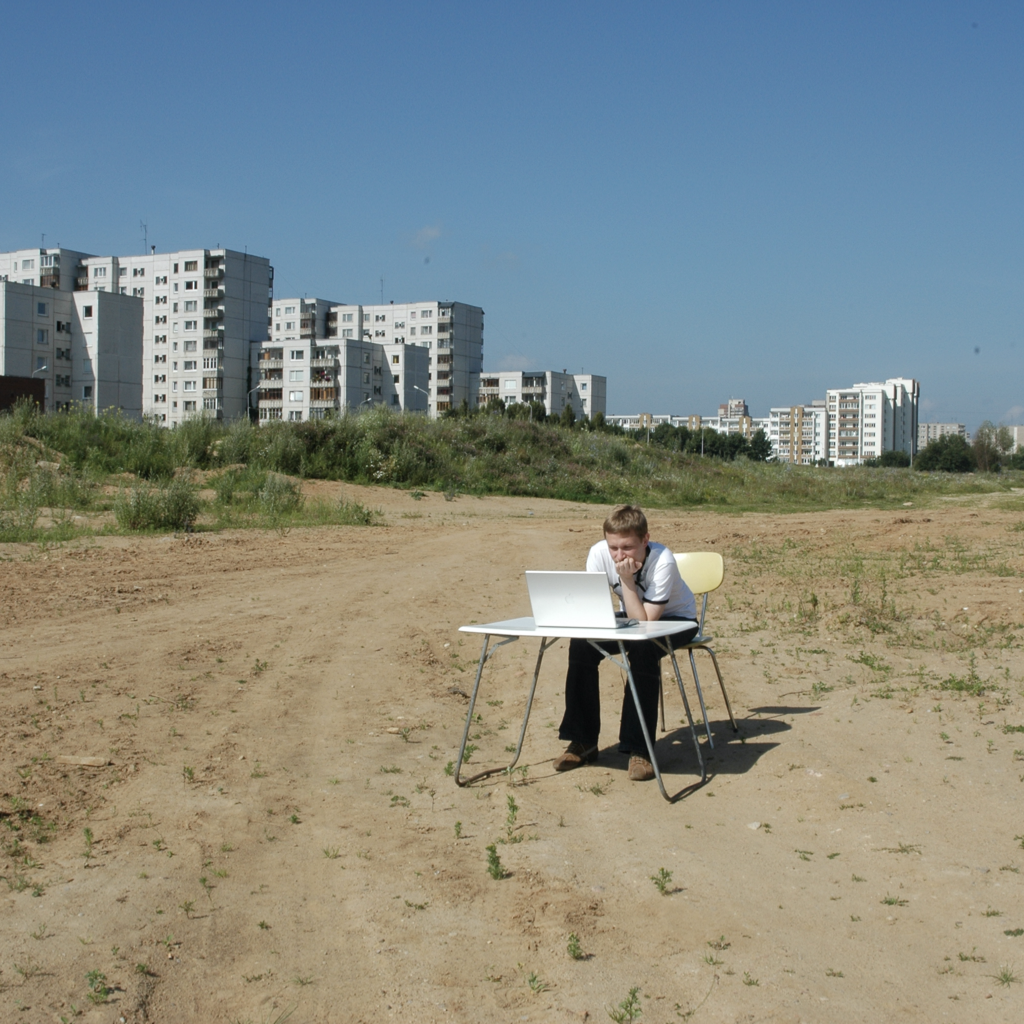Guest Editor Viktoras Bachmetjevas
We have known since Hegel that otherness is a constituent part of the self; that is to say, we cannot form a meaningful self-identity without necessarily referring to something that we consider to be intrinsically alien to us, foreign to the very essence of what we believe to constitute ourselves. This relatively simple idea has set up 200 years of continuous grappling with what the Other is, its function, definition, role, and alike. The Other had to become the source of morality, to merely serve as a mirror to the self, to be the function of transcendence, and so on. A man in space made us think of non-terrestrial beings; feminism taught us to think about women as Other; postcolonial studies did the same with race; postmodern thought showed us otherness in language, while posthumanism made us notice other forms of life as meaningful others. Instead of getting to grips with the Other as a mere function of self-identity, we have observed a proliferation of alterity. There are more and more others, and they don’t seem to be running out any time soon.
Guest Editor Viktoras Bachmetjevas
We have known since Hegel that otherness is a constituent part of the self; that is to say, we cannot form a meaningful self-identity without necessarily referring to something that we consider to be intrinsically alien to us, foreign to the very essence of what we believe to constitute ourselves. This relatively simple idea has set up 200 years of continuous grappling with what the Other is, its function, definition, role, and alike. The Other had to become the source of morality, to merely serve as a mirror to the self, to be the function of transcendence, and so on. A man in space made us think of non-terrestrial beings; feminism taught us to think about women as Other; postcolonial studies did the same with race; postmodern thought showed us otherness in language, while posthumanism made us notice other forms of life as meaningful others. Instead of getting to grips with the Other as a mere function of self-identity, we have observed a proliferation of alterity. There are more and more others, and they don’t seem to be running out any time soon.
At its core, otherness manifests in various forms – race, ethnicity, religion, gender, sexuality, or any marker that distinguishes one group from another. The challenge lies in recognising these differences and how societies respond to and navigate the resulting complexities. The tendency to view the ‘other’ as foreign or threatening can lead to exclusion, discrimination, and even violence, perpetuating cycles of misunderstanding and hatred.
One facet of the problem of otherness is the psychological phenomenon of ethnocentrism, where individuals perceive their cultural or social group as the standard against which all others should be measured. This ethnocentric lens often breeds prejudice, as it blinds individuals to the richness and validity of alternative perspectives. Overcoming this ingrained bias requires embracing diversity and cultivating empathy, recognising that what may be unfamiliar is not inherently inferior.
This issue of * as a Journal is organised as a labyrinth with no exit. There is no typology of others, no systematic approach, and neither a conceptual clarification nor solution to a long-standing problem of one form or another of otherness. Instead, this issue is organised as a journey through the labyrinth with no exit. Each text is intended not as a signpost on the road to a solution but rather as a bump in that road, an obstacle that seeks to problematise and make something unclear that was clear just a minute ago. Indeed, the whole issue is guided by the idea that talking about otherness requires a certain intellectual humility – humility that acknowledges that alterity has to be approached and tackled on its terms and not simply as a result of the self. After all, if Hegel was onto something with his insight about other being a constitutive part of the self, it means that otherness is prior and more primary than the self. This issue is an attempt to treat alterity as such. Hegel was onto something with his insight about other being a constitutive part of the self, it means that otherness is prior and more
From This Issue
Kotryna Lingienė talks to Šarūnas Petrauskas
When the topic of fungi came up (again) at one of our editorial board meetings on this issue of the magazine, one of the board members shared their scepticism and remarked ‘but fungi are discussed all the time right now, maybe we should be more original and leave it out of the Other? Indeed,
in the field of contemporary art and culture which is soaked with anxiety, burnout and inflammation, one of the recurring elements is fungi – their by-products and hallucinogenic properties – which can be consumed as food, prescribed as medicine, or change peroples’ perception of reality and ways of thinking. However, does simply consuming a mushroom and being affected, perhaps even
By Genna Rivieccio
In 1991, when Paris Is Burning was given its wide release into cinemas, the word ‘vogue’ had already entered the cultural lexicon – not thanks to the Black and Latino gay men who had helmed it, but to a white woman named Madonna. The same year as Paris Is Burning, Madonna’s rockumentary, Truth or Dare, was also released. Not only that, but it was released by the same distributor: Miramax. A company, as many know, infamously run by a grotesque, predatory producer named Harvey Weinstein who would, for decades, go unchecked for his oppressive behaviour. This seems more than slightly pertinent to mention in that Paris Is Burning, despite how celebrated it may be, is a film steeped in exploitation. And yet, like Jean-Michel Basquiat knowing full well that Andy Warhol was exploiting him just as much as Basquiat was exploiting Warhol, there’s no denying that the documentary subjects, treated as ‘exotic creatures’ though they might be, are getting something out of it.
Krzysztof Czyżewski
We have destroyed the Berlin Wall, opened the borders, adopted the Internet, and most of us live in multicultural cities. But the existence of a wall is the living experience of modern Europeans. In view of the rising tide of immigrants, and perhaps, primarily, of the growing weakness of the centre which we were accustomed to regard as exclusively ours, we begin to re-erect walls, set fences and barbed wire, along the borders of nation states. At the same time, we are aware that the deepening divisions are less and less a question of the barriers of language, ethnicity, or political systems.
Kotryna Lingienė talks to Šarūnas Petrauskas
When the topic of fungi came up (again) at one of our editorial board meetings on this issue of the magazine, one of the board members shared their scepticism and remarked ‘but fungi are discussed all the time right now, maybe we should be more original and leave it out of the Other?’ Indeed, in the field of contemporary art and culture, which is soaked with anxiety, burnout and inflammation, one of the recurring elements is fungi – their by-products and hallucinogenic properties – which can be consumed as food, prescribed as medicine, or change peroples’ perception of reality and ways of thinking. However, does simply consuming a mushroom and being affected, perhaps even inspired by it, yield results limited to superficial thinking? Once we have agreed that the kingdom of fungi is more powerful than anything we know, should we just stop and enjoy the delicious but very limited fruits of our work?
Genna Rivieccio
In 1991, when Paris Is Burning was given its wide release into cinemas, the word ‘vogue’ had already entered the cultural lexicon – not thanks to the Black and Latino gay men who had helmed it, but to a white woman named Madonna. The same year as Paris Is Burning, Madonna’s rockumentary, Truth or Dare, was also released. Not only that, but it was released by the same distributor: Miramax. A company, as many know, infamously run by a grotesque, predatory producer named Harvey Weinstein who would, for decades, go unchecked for his oppressive behaviour. This seems more than slightly pertinent to mention in that Paris Is Burning, despite how celebrated it may be, is a film steeped in exploitation. And yet, like Jean-Michel Basquiat knowing full well that Andy Warhol was exploiting him just as much as Basquiat was exploiting Warhol, there’s no denying that the documentary subjects, treated as ‘exotic creatures’ though they might be, are getting something out of it. And some even continue to get something out of it to this day. At least, those that survived the ravages of the 80s and 90s as queer men.
Krzysztof Czyżewski
We have destroyed the Berlin Wall, opened the borders, adopted the Internet, and most of us live in multicultural cities. But the existence of a wall is the living experience of modern Europeans. In view of the rising tide of immigrants, and perhaps, primarily, of the growing weakness of the centre which we were accustomed to regard as exclusively ours, we begin to re-erect walls, set fences and barbed wire, along the borders of nation states. At the same time, we are aware that the deepening divisions are less and less a question of the barriers of language, ethnicity, or political systems. Today’s walls grow across the communities living on the same side of the river and are erected by sharp and confrontational boundaries of cultural identities. The increasing proximity of the Other, one not outside of our world but within our intimate space once reserved for what is familiar and close, builds a new wall that seals off our contemporary anxieties and confusion. We realise more and more clearly that our identity is no longer one with the spirit of community, and that by raging battles in defence of the first value, identity, we have lost much of the spirit of the latter, community. The problem of contemporary Europe is not about reinforcement of diversity and differences, but about what Czesław Miłosz called ‘the connective tissue’, the concept on which he based his ‘native realm’. Therefore, the contemporary narrative of Europe is the story of coexistence. Because only coexistence is able to direct this current of thought and action that can once again tear down the wall built on the Old Continent – now not the world of enslavement and Cold War, but the world of growing closeness to the stranger.
From Other Issues
Julijonas Urbonas and Gailė Griciūtė










